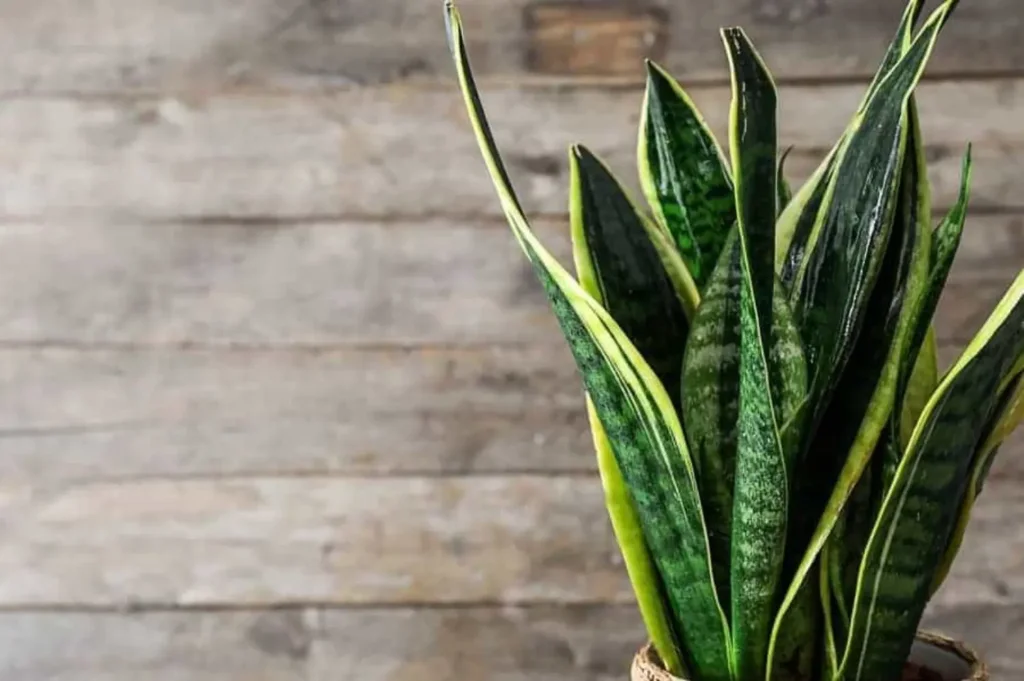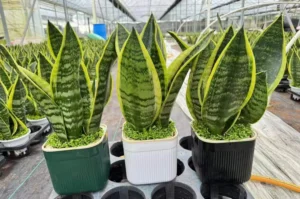Snake plants (Sansevieria, also called Dracaena trifasciata) are often promoted as the ultimate indoor plant: low maintenance, stylish, and great for air purification. But are they truly flawless?
In this article, we’ll take an honest look at the disadvantages of snake plants so you can make an informed decision before bringing one into your space.
1. Toxic to Pets and Children
One of the biggest concerns with snake plants is their toxicity. The leaves contain saponins, a natural chemical that can be harmful when ingested.
Risk:
- Pets like cats and dogs may experience vomiting, drooling, or lethargy if they chew on the plant.
- Small children may also be at risk if they accidentally ingest parts of the plant.
If you have curious pets or toddlers at home, keeping the plant out of reach is essential or you may want to explore non-toxic alternatives.
2. Slow to Grow
While snake plants are easy to care for, they’re also slow growers, especially in low-light indoor environments.
Why it matters:
- If you’re expecting a fast-growing houseplant to fill out space or propagate quickly, you might be disappointed.
- It can take months or even years to see noticeable size changes.
For some plant enthusiasts, the lack of fast growth can be frustrating
3. Prone to Root Rot
Despite their reputation for being hardy, snake plants are surprisingly sensitive to overwatering.
Common watering issues:
- If planted in poorly draining soil or overwatered, the roots can rot.
- Root rot often goes unnoticed until the plant starts to collapse or the base turns mushy.
To avoid this, it’s important to use well-draining soil and water only when the soil is completely dry.
4. Sharp-Edged Leaves Can Be a Hazard
Snake plants are known for their rigid, upright, sword-like leaves. While they’re great for creating a bold visual impact, they can also be sharp to the touch.
Potential problems:
- The pointed leaves can be a hazard in tight spaces or homes with children.
- Accidental bumps may lead to minor scratches or eye-level injuries if not placed carefully.
For safer indoor setups, it’s best to place them in corners or against walls, away from high-traffic areas.
5. Invasive When Planted Outdoors
Snake plants spread underground through rhizomes, which means they can become invasive in outdoor gardens, especially in warm climates.
What can happen:
- The plant may quickly spread and overtake nearby plants.
- It can be hard to control once established and may require physical removal.
If you’re planting snake plants outdoors, especially in tropical or subtropical zones, use containers to manage their spread.
6. Limited Air Purifying Ability
Snake plants gained popularity after a NASA study highlighted their ability to filter indoor air. However, this has led to some overhyped expectations.
Reality check:
- In normal home settings, one or two snake plants won’t drastically improve air quality.
- You’d need a large number of mature plants to notice any real difference.
While they do filter some toxins, they’re best viewed as aesthetic additions with light benefits, not medical-grade air purifiers.
7. Sensitive to Cold Temperatures
Snake plants prefer warmer temperatures and struggle in the cold. If exposed to temperatures below 50°F (10°C), they may suffer damage.
Cold weather effects:
- Leaves become soft and soggy.
- Dark patches or leaf droop may appear.
- Growth may stop entirely during winter.
In colder regions, always keep your plant indoors and away from drafty windows or unheated rooms.
8. Visible Damage Is Irreversible
Unlike plants with soft foliage that recover easily, snake plant leaves don’t heal once damaged.
Permanent marks:
- Cuts, bruises, and rot spots leave scars.
- Pest damage or sunburn affects the plant’s long-term appearance.
The only way to maintain a clean look is by trimming off damaged leaves, which can reduce the plant’s fullness.
9. Lack of Aesthetic Variety (Unless You Go Rare)
Most common snake plant varieties (like Sansevieria trifasciata) have a similar green-and-yellow look.
Limited diversity:
- Without rare cultivars, the plant might feel visually repetitive.
- Uncommon types (like Moonshine or Bantel’s Sensation) are harder to find and more expensive.
If you’re decorating with a bold or varied style, the typical snake plant might not be exciting enough without mixing in other plant types.
10. Susceptible to Pests (Under Stress)
Snake plants are usually pest-resistant, but if kept in poor conditions, they can become vulnerable.
Common pests include:
- Spider mites
- Mealybugs
- Fungus gnats
Infestations often occur when the plant is overwatered, overcrowded, or placed in poorly ventilated spaces. Regular checks and prompt treatment are important to maintain plant health.
Conclusion:
Snake plants are excellent indoor plants for many people, but they aren’t perfect. Despite their hardiness and striking appearance, they do come with a few drawbacks that buyers should consider.
Disadvantages to keep in mind:
- Toxic if eaten by pets or children
- Prone to root rot and leaf damage
- Slow growth and limited visual variety
- Sensitive to cold and overwatering
- Slight risk of injury from sharp leaves
Still, with the right care and placement, many of these issues can be easily managed. Snake plants remain a favorite for good reason: they’re tough, beautiful, and don’t demand much.
Our final advice? If you understand their limitations and still love their aesthetic and benefits, snake plants can be a fantastic addition to your indoor space.






